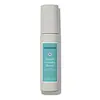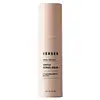What's inside
What's inside
 Key Ingredients
Key Ingredients

 Benefits
Benefits

 Concerns
Concerns

 Ingredients Side-by-side
Ingredients Side-by-side

Water
Skin ConditioningPropanediol
SolventAstrocaryum Murumuru Seed Butter
EmollientGossypium Herbaceum Fruit Water
MaskingRetinol
Skin ConditioningGlycerin
HumectantBakuchiol
AntimicrobialBidens Pilosa Extract
HumectantLinum Usitatissimum Seed Oil
PerfumingHumulus Lupulus Extract
AntimicrobialSodium Hyaluronate
HumectantTocopherol
AntioxidantCaprylyl Glycol
EmollientHelianthus Annuus Seed Oil
EmollientCopernicia Cerifera Wax
Phenoxyethanol
PreservativeCarbomer
Emulsion StabilisingPotassium Sorbate
PreservativeXanthan Gum
EmulsifyingDisodium Cocoamphodiacetate
CleansingHexylene Glycol
EmulsifyingCitric Acid
BufferingSodium Hydroxide
BufferingPolysorbate 20
EmulsifyingGlyceryl Polyacrylate
1,2-Hexanediol
Skin ConditioningEthyl Ferulate
AntioxidantWater, Propanediol, Astrocaryum Murumuru Seed Butter, Gossypium Herbaceum Fruit Water, Retinol, Glycerin, Bakuchiol, Bidens Pilosa Extract, Linum Usitatissimum Seed Oil, Humulus Lupulus Extract, Sodium Hyaluronate, Tocopherol, Caprylyl Glycol, Helianthus Annuus Seed Oil, Copernicia Cerifera Wax, Phenoxyethanol, Carbomer, Potassium Sorbate, Xanthan Gum, Disodium Cocoamphodiacetate, Hexylene Glycol, Citric Acid, Sodium Hydroxide, Polysorbate 20, Glyceryl Polyacrylate, 1,2-Hexanediol, Ethyl Ferulate
Water
Skin ConditioningHelianthus Annuus Seed Oil
EmollientAloe Barbadensis Leaf Juice
Skin ConditioningSodium Acrylate/Sodium Acryloyldimethyl Taurate Copolymer
Emulsion StabilisingSilica
AbrasiveRetinol
Skin ConditioningTocopherol
AntioxidantTocopheryl Acetate
AntioxidantBakuchiol
AntimicrobialCrithmum Maritimum Extract
Skin ConditioningChamomilla Recutita Extract
Skin ConditioningMelia Azadirachta Flower Extract
Skin ConditioningMelia Azadirachta Leaf Extract
Skin ConditioningPaeonia Lactiflora Root Extract
Skin ConditioningOpuntia Streptacantha Stem Extract
HumectantLactobacillus/Papaya Fruit Ferment Extract
AbrasiveButyrospermum Parkii Butter
Skin ConditioningRosa Canina Seed Oil
EmollientHippophae Rhamnoides Seed Oil
Skin ProtectingHydrogenated Vegetable Oil
EmollientSodium Hyaluronate
HumectantGlycerin
HumectantLecithin
EmollientCaprylyl Glycol
EmollientCaprylic/Capric Triglyceride
MaskingXylitol
HumectantAnhydroxylitol
HumectantXylitylglucoside
HumectantTrehalose
HumectantSorbitan Oleate
EmulsifyingPolysorbate 20
EmulsifyingPolysorbate 80
EmulsifyingHexylene Glycol
EmulsifyingIsohexadecane
EmollientPhenoxyethanol
PreservativeEthylhexylglycerin
Skin ConditioningSorbic Acid
PreservativePotassium Sorbate
PreservativeSodium Benzoate
MaskingLeuconostoc/Radish Root Ferment Filtrate
AntimicrobialCitric Acid
BufferingWater, Helianthus Annuus Seed Oil, Aloe Barbadensis Leaf Juice, Sodium Acrylate/Sodium Acryloyldimethyl Taurate Copolymer, Silica, Retinol, Tocopherol, Tocopheryl Acetate, Bakuchiol, Crithmum Maritimum Extract, Chamomilla Recutita Extract, Melia Azadirachta Flower Extract, Melia Azadirachta Leaf Extract, Paeonia Lactiflora Root Extract, Opuntia Streptacantha Stem Extract, Lactobacillus/Papaya Fruit Ferment Extract, Butyrospermum Parkii Butter, Rosa Canina Seed Oil, Hippophae Rhamnoides Seed Oil, Hydrogenated Vegetable Oil, Sodium Hyaluronate, Glycerin, Lecithin, Caprylyl Glycol, Caprylic/Capric Triglyceride, Xylitol, Anhydroxylitol, Xylitylglucoside, Trehalose, Sorbitan Oleate, Polysorbate 20, Polysorbate 80, Hexylene Glycol, Isohexadecane, Phenoxyethanol, Ethylhexylglycerin, Sorbic Acid, Potassium Sorbate, Sodium Benzoate, Leuconostoc/Radish Root Ferment Filtrate, Citric Acid
 Reviews
Reviews

Ingredients Explained
These ingredients are found in both products.
Ingredients higher up in an ingredient list are typically present in a larger amount.
Bakuchiol is a plant-derived antioxidant (it's vegan!). It is often called the replacement for retinol although it is not part of the same family.
It has similar effects as retinol: skin smoothing, reducing discoloration, and preventing wrinkles. It does not cause as much irritation as traditional retinoids.
Bakuchiol works by breaking down free radicals and stimulating collagen production in skin.
Combining bakuchiol with retinol will not have adverse side effects. Studies show using them will just boost the benefits. Bakuchiol is also found to help stabilize retinol.
While bakuchiol does not make the skin more sun sensitive, we recommend wearing SPF on a daily basis.
Read more about traditional retinol
Learn more about BakuchiolCaprylyl Glycol is a humectant and emollient, meaning it attracts and preserves moisture.
It is a common ingredient in many products, especially those designed to hydrate skin. The primary benefits are retaining moisture, skin softening, and promoting a healthy skin barrier.
Though Caprylyl Glycol is an alcohol derived from fatty acids, it is not the kind that can dry out skin.
This ingredient is also used as a preservative to extend the life of products. It has slight antimicrobial properties.
Learn more about Caprylyl GlycolCitric Acid is an alpha hydroxy acid (AHA) naturally found in citrus fruits like oranges, lemons, and limes.
Like other AHAs, citric acid can exfoliate skin by breaking down the bonds that hold dead skin cells together. This helps reveal smoother and brighter skin underneath.
However, this exfoliating effect only happens at high concentrations (20%) which can be hard to find in cosmetic products.
Due to this, citric acid is usually included in small amounts as a pH adjuster. This helps keep products slightly more acidic and compatible with skin's natural pH.
In skincare formulas, citric acid can:
While it can provide some skin benefits, research shows lactic acid and glycolic acid are generally more effective and less irritating exfoliants.
Most citric acid used in skincare today is made by fermenting sugars (usually from molasses). This synthetic version is identical to the natural citrus form but easier to stabilize and use in formulations.
Read more about some other popular AHA's here:
Learn more about Citric AcidGlycerin is already naturally found in your skin. It helps moisturize and protect your skin.
A study from 2016 found glycerin to be more effective as a humectant than AHAs and hyaluronic acid.
As a humectant, it helps the skin stay hydrated by pulling moisture to your skin. The low molecular weight of glycerin allows it to pull moisture into the deeper layers of your skin.
Hydrated skin improves your skin barrier; Your skin barrier helps protect against irritants and bacteria.
Glycerin has also been found to have antimicrobial and antiviral properties. Due to these properties, glycerin is often used in wound and burn treatments.
In cosmetics, glycerin is usually derived from plants such as soybean or palm. However, it can also be sourced from animals, such as tallow or animal fat.
This ingredient is organic, colorless, odorless, and non-toxic.
Glycerin is the name for this ingredient in American English. British English uses Glycerol/Glycerine.
Learn more about GlycerinHelianthus Annuus Seed Oil is the oil derived from the seeds of a Sunflower. Sunflower seed oil is non-fragrant. It is an emollient, meaning it helps to soften the skin.
Sunflower seed oil contains many fatty acids. The fatty acids found in sunflower seeds include (from highest amount to least): linoleic acid, myristic acid, palmitic acid, stearic acid, arachidic acid, oleic acid, and linolenic acid.
These fatty acids help the skin create ceramides. Ceramides play a role in repairing the skin barrier.
Helianthus Annuus Seed Oil helps moisturize the skin. This in turn helps the skin look more rejuvenated and smoother.
Sunflowers are rich in vitamin E.
Historians believe Indigenous cultures of North America domesticated sunflowers before corn. Thus they relied on sunflower oil for a variety of uses. One such use is moisturizing skin and hair.
Sunflower seed oil may not be fungal acne safe. We recommend speaking with a professional if you have any concerns.
Learn more about Helianthus Annuus Seed OilHexylene Glycol is a surfactant. Glycols are a class of alcohols. Hexylene Glycol is a surfactant and emulsifier.
As a surfactant, Hexylene Glycol helps gather dirt and oil on your skin to be washed away.
As an emulsifier, Hexylene Glycol helps keep water and oil together. This prevents them from separating in a product. Hexylene Glycol also thins out the texture of a product by lessening viscosity.
Hexylene Glycol has a small molecular weight.
Learn more about Hexylene GlycolPhenoxyethanol is a preservative that has germicide, antimicrobial, and aromatic properties. Studies show that phenoxyethanol can prevent microbial growth. By itself, it has a scent that is similar to that of a rose.
It's often used in formulations along with Caprylyl Glycol to preserve the shelf life of products.
Polysorbate 20 is made by combining ethoxylation of sorbitan, ethylene oxide, and lauric acid. It is a mild cleansing agent, surfactant, and emulsifier.
As a surfactant, it helps collect dirt and oils for washing. Emulsifiers prevent oils and water from separating.
Polysorbate 20 also adds scent to a product. Since it is made using sorbitol, it has a sweet scent. Sorbitol can also be found in fruits such as apples and peaches.
The lauric acid used to create Polysorbate 20 is often derived from coconuts.
Polysorbate 20 may not be fungal acne safe.
Learn more about Polysorbate 20Potassium Sorbate is a preservative used to prevent yeast and mold in products. It is commonly found in both cosmetic and food products.
This ingredient comes from potassium salt derived from sorbic acid. Sorbic acid is a natural antibiotic and effective against fungus.
Both potassium sorbate and sorbic acid can be found in baked goods, cheeses, dried meats, dried fruit, ice cream, pickles, wine, yogurt, and more.
You'll often find this ingredient used with other preservatives.
Learn more about Potassium SorbateRetinol is a gold-standard ingredient for anti-aging. It is a form of Vitamin A and belongs to the class of retinoids that also includes tretinoin.
Why is retinol famous?
It has the most scientific studies backing up its skin benefits out of all the non-prescription ingredients.
Retinol is proven to:
This is why retinol is effective at removing wrinkles, fading dark spots, treating acne, and reducing the appearance of pores.
Studies show retinol is less effective when exposed to UV. Be sure to look for appropriate packaging to keep your retinol potent (similar to Vitamin C).
Using retinol or any retinoids will increase sun-sensitivity in the first few months. Though studies show retinoids increase your skin's natural SPF with continuous use, it is best to always wear sunscreen and sun-protection.
We recommend speaking with a medical professional about using this ingredient during pregnancy.
Retinol may cause irritation in some people, so be sure to patch test. Experts recommend 'ramping up' retinol use: start using this ingredient once a week and work up to using it daily.
Read about Tretinoin
Learn more about RetinolSodium Hyaluronate is hyaluronic acid's salt form. It is commonly derived from the sodium salt of hyaluronic acid.
Like hyaluronic acid, it is great at holding water and acts as a humectant. This makes it a great skin hydrating ingredient.
Sodium Hyaluronate is naturally occurring in our bodies and is mostly found in eye fluid and joints.
These are some other common types of Hyaluronic Acid:
Learn more about Sodium HyaluronateTocopherol (also known as Vitamin E) is a common antioxidant used to help protect the skin from free-radicals and strengthen the skin barrier. It's also fat soluble - this means our skin is great at absorbing it.
Vitamin E also helps keep your natural skin lipids healthy. Your lipid skin barrier naturally consists of lipids, ceramides, and fatty acids. Vitamin E offers extra protection for your skin’s lipid barrier, keeping your skin healthy and nourished.
Another benefit is a bit of UV protection. Vitamin E helps reduce the damage caused by UVB rays. (It should not replace your sunscreen). Combining it with Vitamin C can decrease sunburned cells and hyperpigmentation after UV exposure.
You might have noticed Vitamin E + C often paired together. This is because it is great at stabilizing Vitamin C. Using the two together helps increase the effectiveness of both ingredients.
There are often claims that Vitamin E can reduce/prevent scarring, but these claims haven't been confirmed by scientific research.
Learn more about TocopherolWater. It's the most common cosmetic ingredient of all. You'll usually see it at the top of ingredient lists, meaning that it makes up the largest part of the product.
So why is it so popular? Water most often acts as a solvent - this means that it helps dissolve other ingredients into the formulation.
You'll also recognize water as that liquid we all need to stay alive. If you see this, drink a glass of water. Stay hydrated!
Learn more about Water